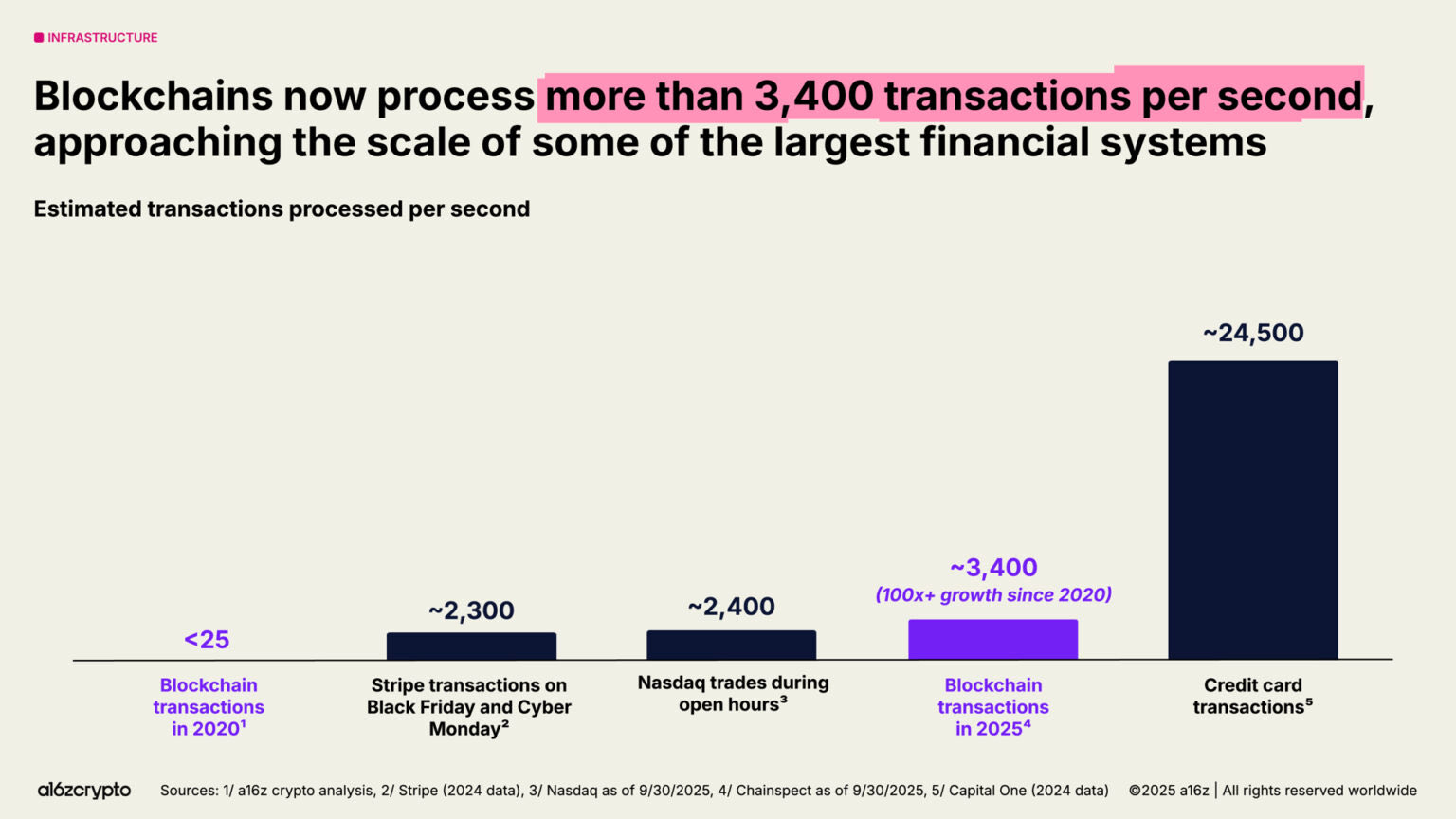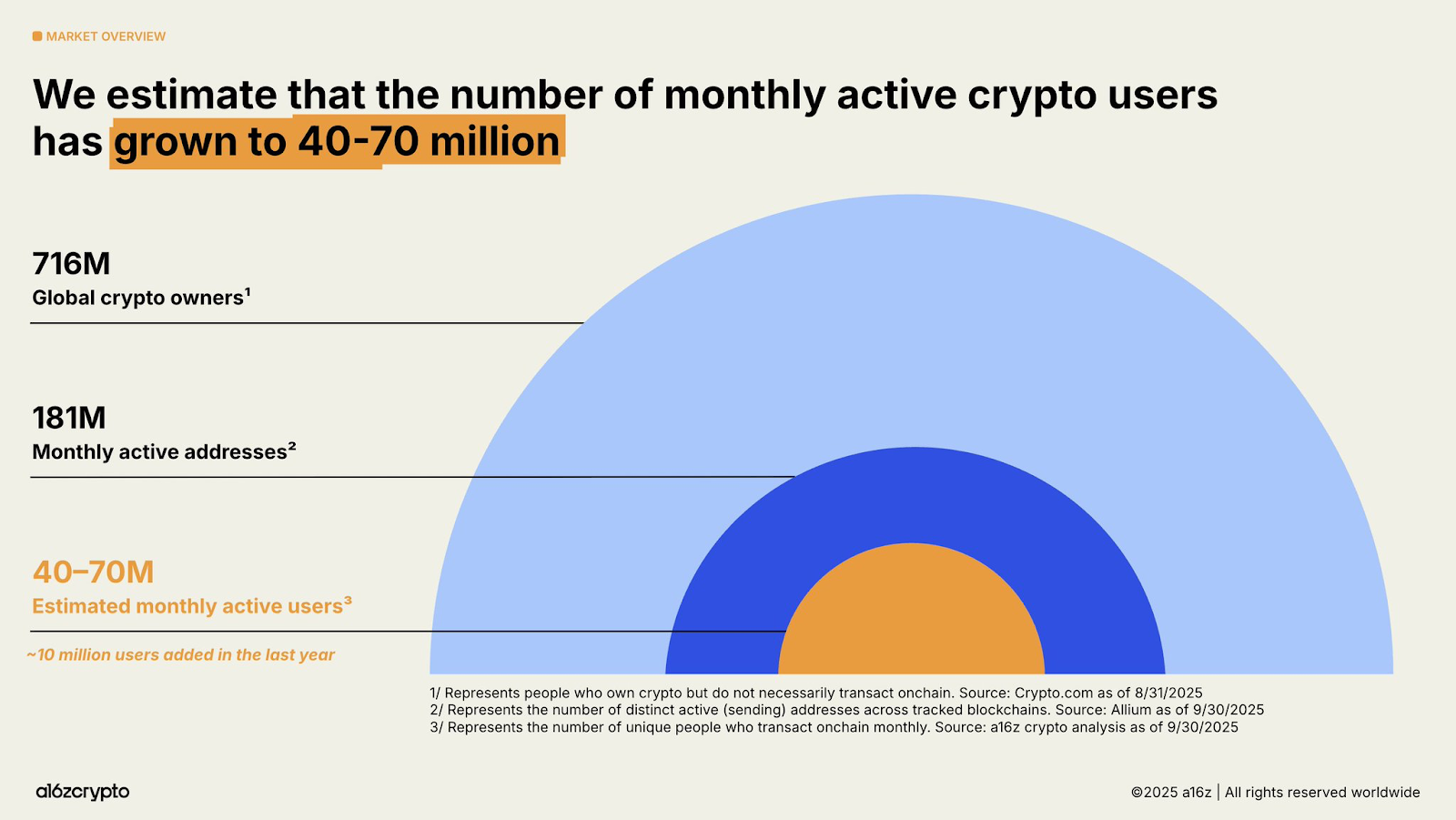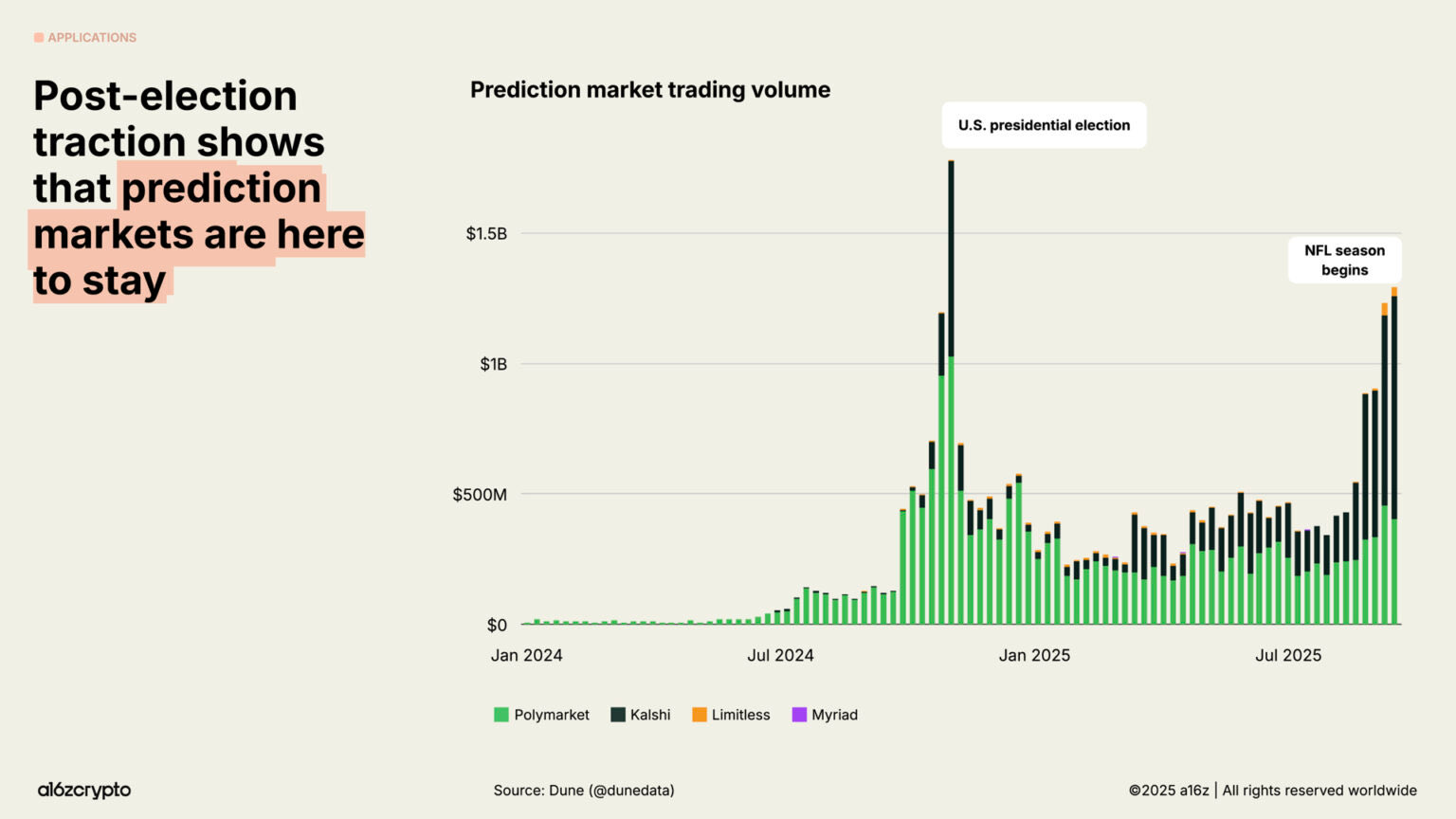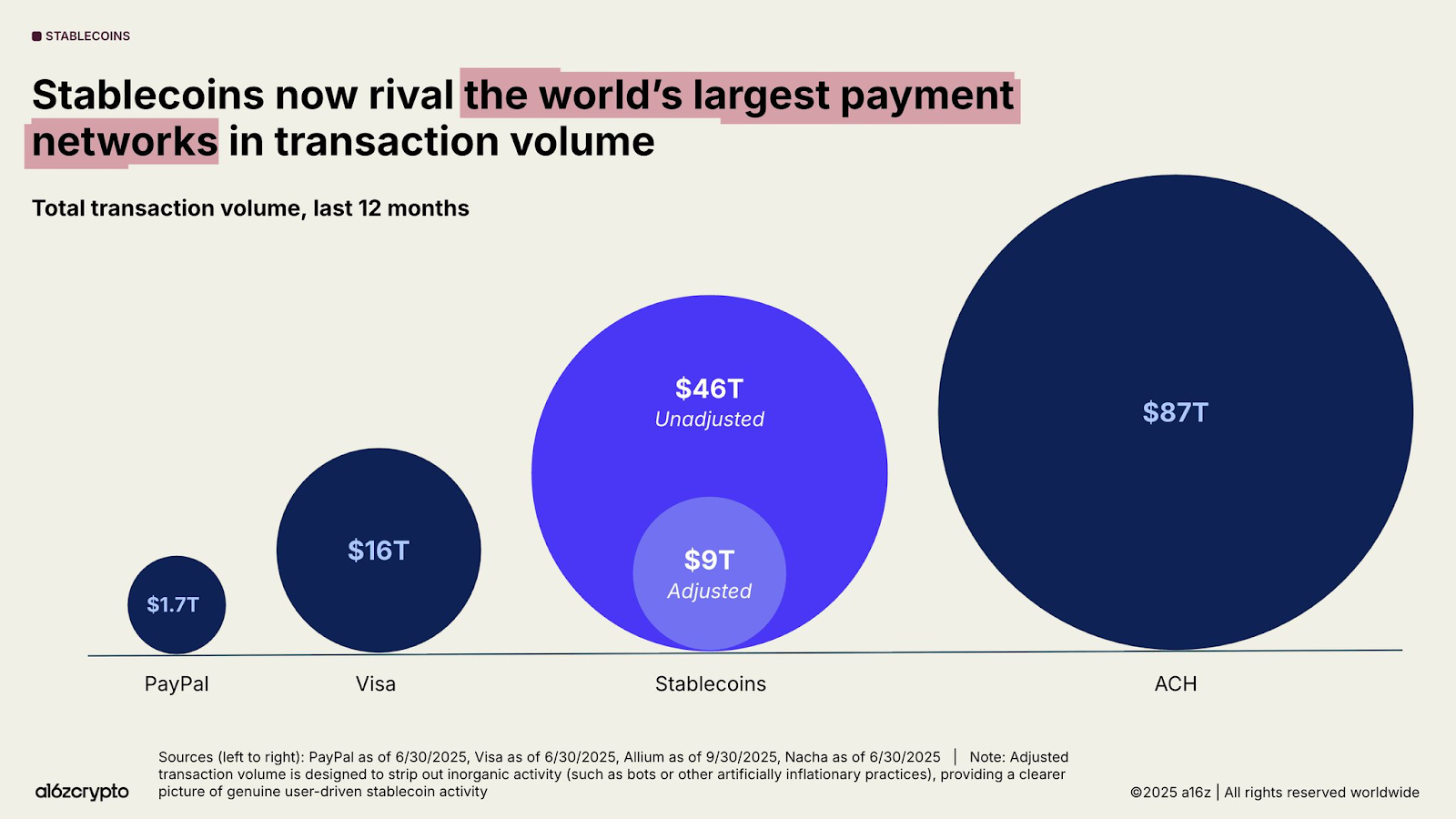- The blockchains led by Ethereum have improved their throughput over the years to cater to mainstream users.
- The adoption of blockchain technology by institutional investors, fueled by clear regulations, has helped increase throughput over the years.
- Blockchains are yet to outshine credit card transactions, suggesting the technology is still in an early maturation phase.
Blockchain technology is rapidly maturing, now capable of processing transaction volumes that rival major traditional financial systems, according to the 2025 State of Crypto report from a16z crypto. The venture firm’s analysis reveals blockchain throughput growth exploded by over 100x in just five years, demonstrating significant strides in scalability.
As a result of 100x growth in blockchains’ TPS, the nascent technology is at par with the largest financial systems. According to the report, Stripe’s throughput during Black Friday and Cyber Monday is about 2,300 TPS. The NASDAQ’s trades during its opening hours process around 2,400 TPS.
Blockchains Now Outpace Stripe, NASDAQ Peak TPS After 100x Growth (a16z)

Meanwhile, the blockchain technology is yet to outpace credit card transactions per second, currently at around 24,500. As such, it is safe to assume that the blockchain technology is in the early maturation stage.
Why are Blockchains’ TPS Up 100x in Five Years
Developments of Blockchains to Cater for Mainstream Adoption of Crypto
The blockchains have grown to process 3,400 TPS, largely fueled by the mainstream adoption of crypto assets. According to the a16z report, the estimated number of monthly active crypto users has grown to 40-70 million, while the global crypto owners stand at over 716 million.

Blockchains have evolved over the years to increase their throughput, led by Ethereum (ETH). Notably, the Ethereum network has dozens of layer two scaling solutions, ever since it transitioned to a proof-of-stake consensus mechanism.
New Use Cases for the Blockchain and Crypto Industry: Tokenization, Prediction Markets, and Decentralized Perpetual Trading
The blockchain technology has attracted more institutional investors in the past few years, thus fueling new use cases. For instance, the a16z report shows that transactions on prediction markets have grown exponentially year-to-date, fueled by Polymarket.

The blockchain technology has also seen the mainstream adoption of decentralized exchanges focused on perpetual trading, such as Hyperliquid.
Meanwhile, tokenization of real-world assets (RWA) has also played a major role in the notable growth of blockchain TPS. Institutional investors such as BlackRock have already ventured into the tokenization market, thus channeling billions of dollars into blockchain technology.
Stablecoin Growth Fueled by Clear Crypto Regulations
The stablecoin market has grown exponentially since the 2021 crypto bull market. The a16z report noted that stablecoins’ organic adoption has helped them process an unadjusted volume of $46 trillion YTD, and an adjusted volume of around $9 trillion.

In comparison, Visa processed a total of 16 trillion transactions during the past 12 months, while PayPal processed around 1.7 trillion. The mainstream adoption of stablecoins has been accelerated by the recent enactment of the GENIUS Act by President Donald Trump.
Disclaimer: The information presented in this article is for informational and educational purposes only. The article does not constitute financial advice or advice of any kind. Coin Edition is not responsible for any losses incurred as a result of the utilization of content, products, or services mentioned. Readers are advised to exercise caution before taking any action related to the company.







